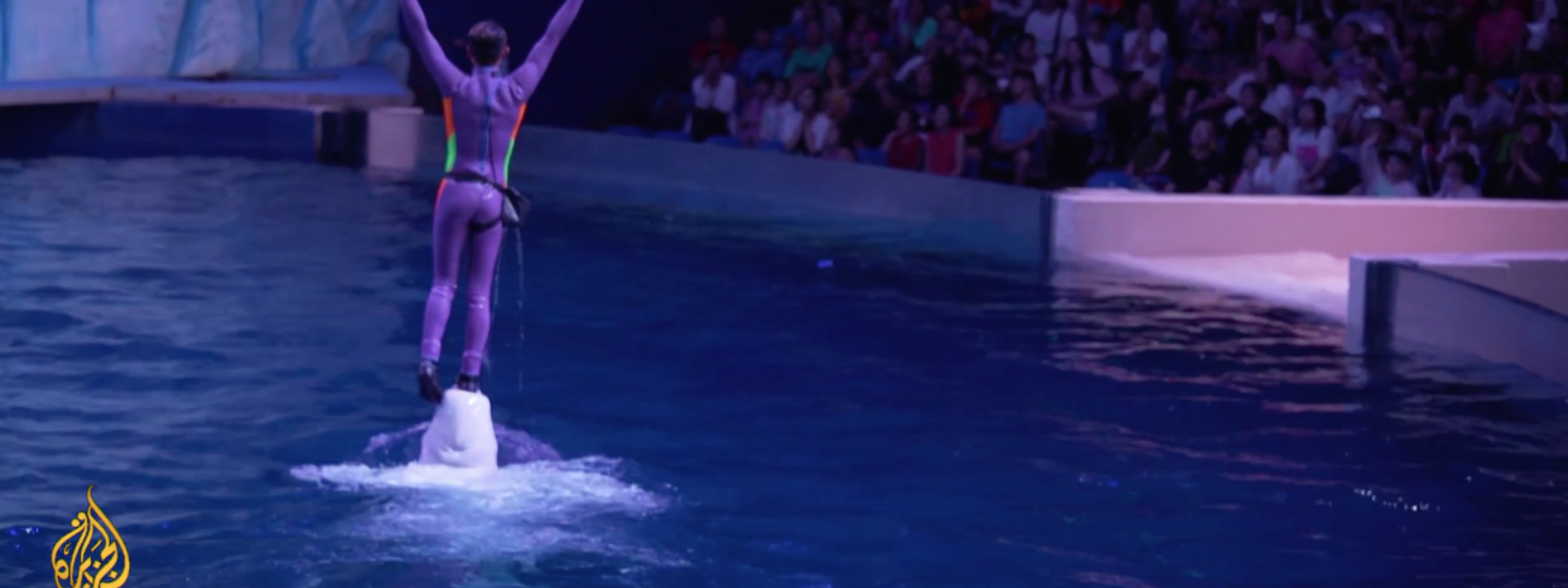
Blame SeaWorld for China’s Booming Captive Cetacean Industry
Recently, two investigations into China’s booming captive cetacean entertainment industry have revealed appalling conditions and widespread death among captive animals.
However, these articles tend to focus on the poor living conditions and husbandry of captives, rather than the true reasons captivity is so wrong. Keeping animals – particularly marine mammals – constrained in tanks is harmful, no matter the conditions. It also teaches people that it is acceptable to completely dominate other species for the entirety of their lives, without a second thought to how this might make them feel.
Al Jazeera put out a video of a two year investigation where reporters at times went undercover to explore the underbelly of this horrific industry. Sick animals, who would bring public criticism to the facility, were found hidden away in “dying pools”, essentially left to rot in the dark. In another room, frozen carcasses were found, reportedly of individuals who were once “star performers” pushed too hard during shows and who’d succumbed to injuries.
Most of the dolphins that Chinese aquariums show were acquired through the brutal dolphin drive hunts in Taiji, Japan. The entire pods are often butchered, while only a few “show quality” dolphins (usually female bottlenose dolphins, although other species are also traded) are condemned to a shortened life in captivity.
Reuters also put out their own story, drawing links to the captures of wild orcas and belugas currently happening in Russia, most of which are now being exported to Chinese facilities.
Ultimately, these two media pieces are important for the world to learn. However, the focus shouldn’t just be on the blatant mis-management of these facilities, though this undoubtedly increases the suffering of captive individuals. The real issue is with the industry as a whole. Animals – whether they are wild or domesticated – should not have to endure a lifetime of living in prison-like conditions, forced to behave in ways that benefit humans. It seems clear that the captivity industry is staffed and steered by people who believe animals exist in order to be exploited, despite what they may say about caring for the animals they dominate.
SeaWorld, an American company, is the cetacean captivity industry’s global leader, and has long exported the idea that intelligent, emotional, sentient beings ought to be exploited for profit around the world. Many former staff members from SeaWorld are active in capturing and training wild cetaceans for captivity, or consulting with other nation’s facilities on capture and training. The company continues to dig in its heels about retaining this outdated and cruel business model.
SeaWorld may have more qualified veterinarians on their payroll, however they are just as bad as China’s aquariums for their promotion of using animals for money.
